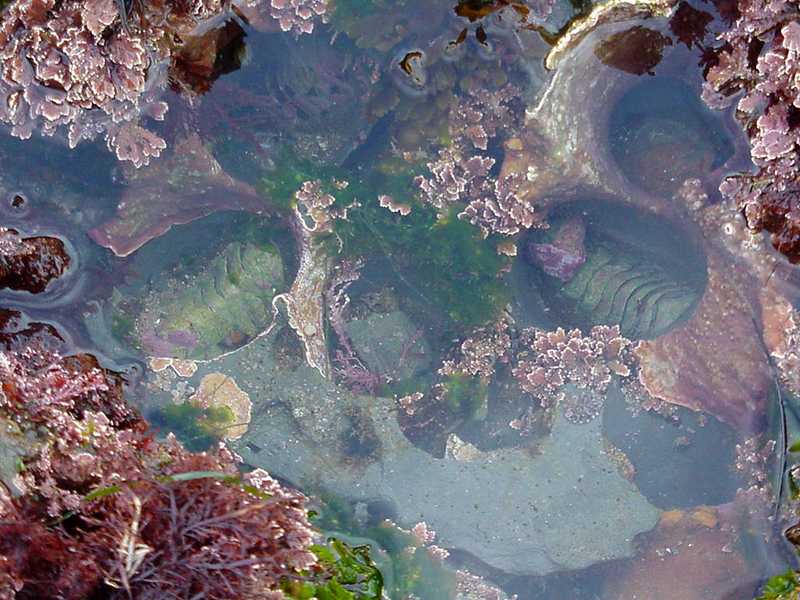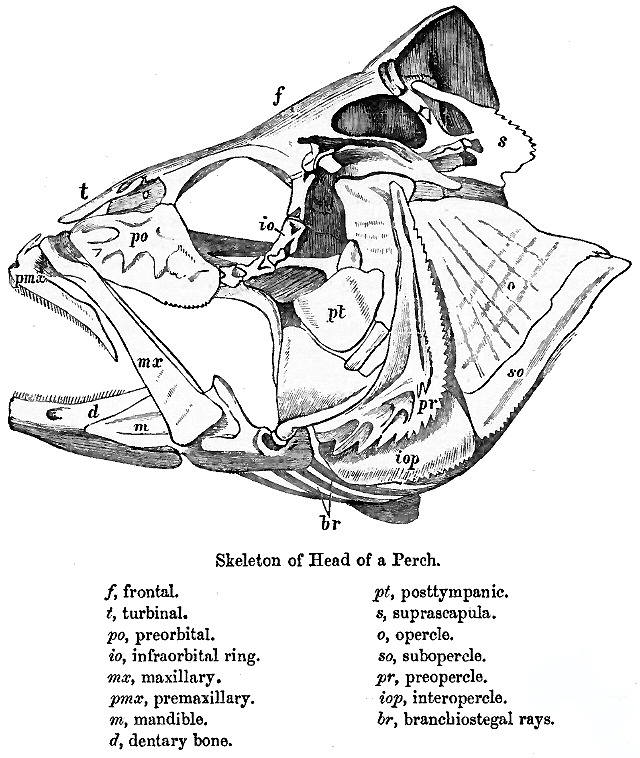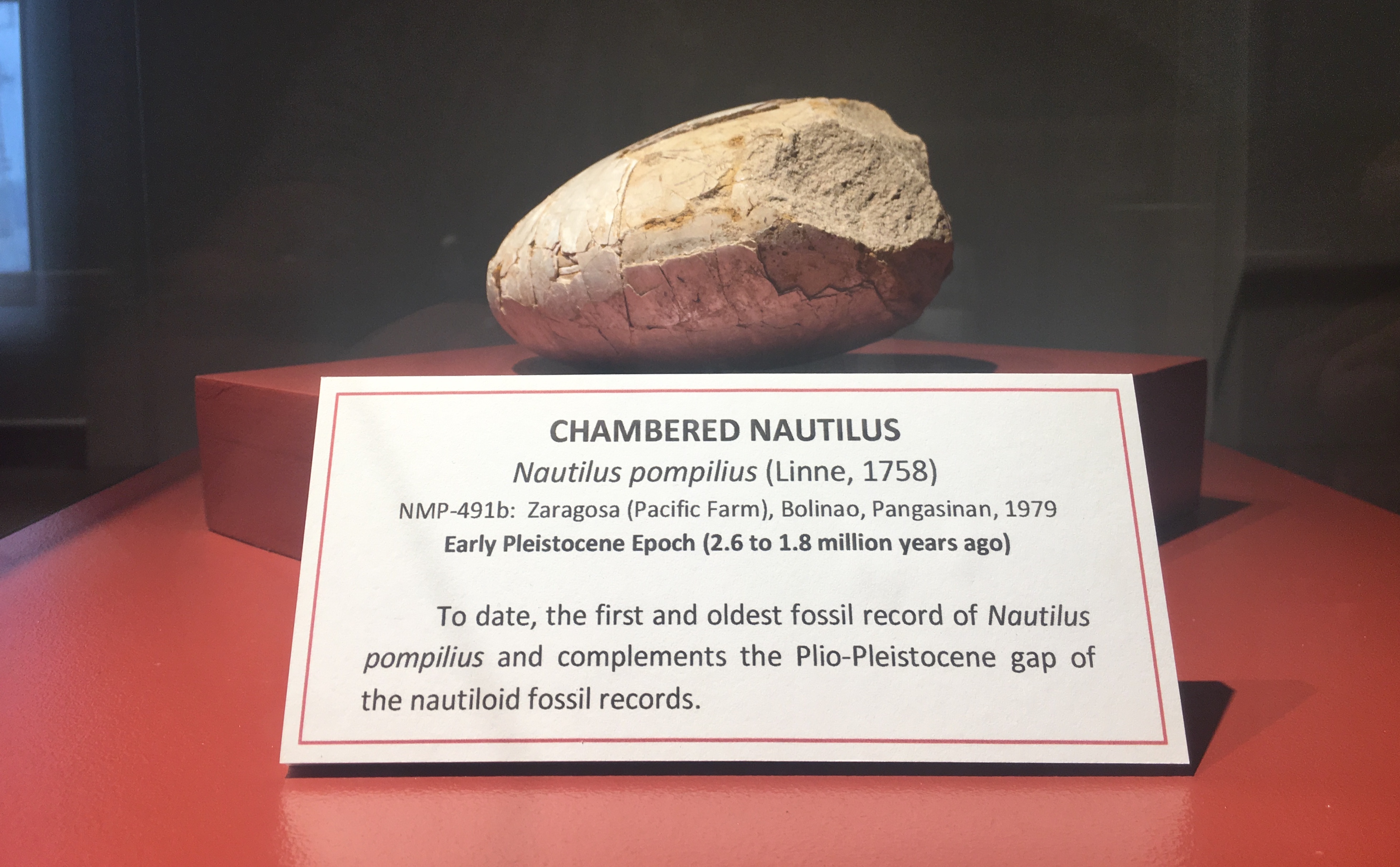|
Palau Nautilus
The Palau nautilus (''Nautilus belauensis'') is a nautiloid mainly found off of Palau in the Western Carolines. It can be found on fore reef slopes, at depths of 95m-504m (311'-1,653'), though typically preferring a range of 150m-300m (492'-984'), where water temperatures stay around 16.6 °C (61.88°F) and do not go much lower than 9.4 °C (48.92°F). ''N. belauensis'' are highly mobile, epibenthic scavengers and opportunistic predators which rely mostly on scent for finding food. They are active both diurnally and nocturnally within their preferred depth ranges, although most shallow-water incursions are, generally, nocturnal events that coincide with greatly diminished fish activities. Anatomy ''N. belauensis'' shell is similar to that of '' N. pompilius'', but it is distinguished by its larger mean mature shell diameter and shell weight. Its shell characteristic pattern consists of bifurcating brown to red stripes that extend from the umbilicus to the venter withou ... [...More Info...] [...Related Items...] OR: [Wikipedia] [Google] [Baidu] |
Palau
Palau, officially the Republic of Palau, is an island country in the Micronesia subregion of Oceania in the western Pacific Ocean. The Republic of Palau consists of approximately 340 islands and is the western part of the Caroline Islands, while the eastern and central parts make up the Federated States of Micronesia. It has a total area of , making it the sixteenth smallest country in the world. The most populous island is Koror, home to the country's most populous city of the same name. The capital, Ngerulmud, is located on the largest island of Babeldaob, in Melekeok State. Palau shares maritime boundaries with international waters to the north, the Federated States of Micronesia to the east, Indonesia to the south, and the Philippines to the northwest. The country was originally settled approximately 3,000 years BP by migrants from Maritime Southeast Asia. Palau was first drawn on a European map by the Bohemian missionary Paul Klein based on a description g ... [...More Info...] [...Related Items...] OR: [Wikipedia] [Google] [Baidu] |
Caroline Islands
The Caroline Islands (or the Carolines) are a widely scattered archipelago of tiny islands in the western Pacific Ocean, to the north of New Guinea. Politically, they are divided between the Federated States of Micronesia (FSM) in the central and eastern parts of the group, and Palau at the extreme western end. Historically, this area was also called ''Nuevas Filipinas'' or New Philippines, because they were part of the Spanish East Indies and were governed from Manila in the Philippines. The Carolines are scattered across a distance of approximately , from the westernmost island, Tobi (island), Tobi, in Palau, to the easternmost island, Kosrae, a Administrative divisions of the Federated States of Micronesia, state of the FSM. Description The group consists of about 500 small coral islands, east of the Philippines, in the Pacific Ocean. The distance from Yap (one of the larger Caroline islands) to Manila is . Most of the islands are made up of low, flat atoll, coral ato ... [...More Info...] [...Related Items...] OR: [Wikipedia] [Google] [Baidu] |
Benthos
Benthos (), also known as benthon, is the community of organisms that live on, in, or near the bottom of a sea, river, lake, or stream, also known as the benthic zone.Benthos from the Census of Antarctic Marine Life website This community lives in or near marine or freshwater sedimentary environments, from tidal pools along the , out to the continental shelf, and then down to the [...More Info...] [...Related Items...] OR: [Wikipedia] [Google] [Baidu] |
Scavenger
Scavengers are animals that consume Corpse decomposition, dead organisms that have died from causes other than predation or have been killed by other predators. While scavenging generally refers to carnivores feeding on carrion, it is also a herbivorous feeding behavior. Scavengers play an important role in the ecosystem by consuming dead animal and plant material. Decomposer, ''Decomposers'' and detritivores complete this process, by consuming the remains left by scavengers. Scavengers aid in overcoming fluctuations of food resources in the environment. The process and rate of scavenging is affected by both Biotic component, biotic and Abiotic component, abiotic factors, such as carcass size, habitat, temperature, and seasons. Etymology Scavenger is an alteration of ''scavager,'' from Middle English ''skawager'' meaning "customs collector", from ''skawage'' meaning "customs", from Old North French ''escauwage'' meaning "inspection", from ''schauwer'' meaning "to inspect", of ... [...More Info...] [...Related Items...] OR: [Wikipedia] [Google] [Baidu] |
Opportunism
300px, ''Opportunity Seized, Opportunity Missed'', engraving by Theodoor Galle, 1605 Opportunism is the practice of taking advantage of circumstances — with little regard for principles or with what the consequences are for others. Opportunist actions are expedient actions guided primarily by self-interested motives. The term can be applied to individual humans and living organisms, groups, organizations, styles, behaviors and trends. Opportunism or "opportunistic behaviour" is an important concept in such fields of study as biology, transaction cost economics, game theory, ethics, psychology, sociology and politics. Etymology In the early 19th century, the term "opportunist" as a noun or adjective was already known and used in several European languages, but initially, it rarely referred to political processes or to a political tendency. The English term "opportunism" is possibly borrowed originally from the Italian expression ''opportunismo''. In 19th-century Itali ... [...More Info...] [...Related Items...] OR: [Wikipedia] [Google] [Baidu] |
Predation
Predation is a biological interaction in which one organism, the predator, kills and eats another organism, its prey. It is one of a family of common List of feeding behaviours, feeding behaviours that includes parasitism and micropredation (which usually do not kill the Host (biology), host) and parasitoidism (which always does, eventually). It is distinct from Scavenger, scavenging on dead prey, though many predators also scavenge; it overlaps with Herbivore, herbivory, as Seed predation, seed predators and destructive frugivores are predators. Predation behavior varies significantly depending on the organism. Many predators, especially carnivores, have evolved distinct hunting strategy, hunting strategies. Pursuit predation involves the active search for and pursuit of prey, whilst ambush predation, ambush predators instead wait for prey to present an opportunity for capture, and often use stealth or aggressive mimicry. Other predators are opportunism, opportunistic or om ... [...More Info...] [...Related Items...] OR: [Wikipedia] [Google] [Baidu] |
Diurnality
Diurnality is a form of plant and ethology, animal behavior characterized by activity during daytime, with a period of sleeping or other inactivity at night. The common adjective used for daytime activity is "diurnal". The timing of activity by an animal depends on a variety of environmental factors such as the temperature, the ability to gather food by sight, the risk of predation, and the time of year. Diurnality is a cycle of activity within a 24-hour period; cyclic activities called circadian rhythms are endogenous cycles not dependent on external cues or environmental factors except for a zeitgeber. Animals active during twilight are crepuscular, those active during the night are nocturnal and animals active at sporadic times during both night and day are cathemerality, cathemeral. Plants that open their flowers during the daytime are described as diurnal, while those that bloom during nighttime are nocturnal. The timing of flower opening is often related to the time at whic ... [...More Info...] [...Related Items...] OR: [Wikipedia] [Google] [Baidu] |
Nocturnality
Nocturnality is a behavior in some non-human animals characterized by being active during the night and sleeping during the day. The common adjective is "nocturnal", versus diurnal meaning the opposite. Nocturnal creatures generally have highly developed senses of hearing, smell, and specially adapted eyesight. Some animals, such as ferrets, have eyes that can adapt to both low-level and bright day levels of illumination (see metaturnal). Others, such as bushbabies and (some) bats, can function only at night. Many nocturnal creatures including tarsiers and some owls have large eyes in comparison with their body size to compensate for the lower light levels at night. More specifically, they have been found to have a larger cornea relative to their eye size than diurnal creatures to increase their : in the low-light conditions. Nocturnality helps wasps, such as ''Apoica flavissima'', avoid hunting in intense sunlight. Diurnal animals, including humans (except for ni ... [...More Info...] [...Related Items...] OR: [Wikipedia] [Google] [Baidu] |
Teleost
Teleostei (; Ancient Greek, Greek ''teleios'' "complete" + ''osteon'' "bone"), members of which are known as teleosts (), is, by far, the largest group of ray-finned fishes (class Actinopterygii), with 96% of all neontology, extant species of fish. The Teleostei, which is variously considered a Division (zoology), division or an infraclass in different taxonomic systems, include over 26,000 species that are arranged in about 40 order (biology), orders and 448 family (biology), families. Teleosts range from giant oarfish measuring or more, and ocean sunfish weighing over , to the minute male anglerfish ''Photocorynus spiniceps'', just long. Including not only torpedo-shaped fish built for speed, teleosts can be flattened vertically or horizontally, be elongated cylinders or take specialised shapes as in anglerfish and seahorses. The difference between teleosts and other bony fish lies mainly in their jaw bones; teleosts have a movable premaxilla and corresponding modifications ... [...More Info...] [...Related Items...] OR: [Wikipedia] [Google] [Baidu] |
Chambered Nautilus
The chambered nautilus (''Nautilus pompilius''), also called the pearly nautilus, is the best-known species of nautilus. The shell, when cut away, reveals a lining of lustrous nacre and displays a nearly perfect equiangular spiral, although it is not a golden spiral. The shell exhibits countershading, being light on the bottom and dark on top. This is to help avoid predators, because when seen from above, it blends in with the darkness of the sea, and when seen from below, it blends in with the light coming from above. The range of the chambered nautilus encompasses much of the south Pacific; It has been found near reefs and on the seafloor off the coasts of Australia, Japan, and Micronesia. The eyes of the chambered nautilus, like those of all ''Nautilus'' species, are more primitive than those of most other cephalopods; the eye has no lens and thus is comparable to a pinhole camera. The species has about 90 cirri (referred to as "tentacles"; see ) that do not have suckers, ... [...More Info...] [...Related Items...] OR: [Wikipedia] [Google] [Baidu] |
Septum (cephalopod)
Septa (singular septum) are thin walls or partitions between the internal chambers (camerae) of the shell of a cephalopod, namely nautiloids or ammonoids. As the creature grows, its body moves forward in the shell to a new living chamber, secreting septa behind it. This adds new chambers to the shell, which can be clearly seen in cross-sections of the shell of the living nautilus, or in ammonoid and nautiloid fossils. The septa are attached to the inside wall of the shell, thus dividing the phragmocone into camerae. Where the septum meets the shell a suture line forms; in some ammonoids these lines became extremely complex and elaborate, providing strength without the necessity of added weight. Elaborate sutures allowed for thinner shells, and hence less time needed for shell growth and less time spent in the vulnerable juvenile stage. The nature and structure of the septa, as with the camerae, and siphuncle, and the presence or absence of deposits, are important in classi ... [...More Info...] [...Related Items...] OR: [Wikipedia] [Google] [Baidu] |
Hyponome
A siphon is an anatomical structure which is part of the body of aquatic molluscs in three classes: Gastropoda, Bivalvia and Cephalopoda (members of these classes include saltwater and freshwater snails, clams, octopus, squid and relatives). Siphons in molluscs are tube-like structures in which water (or, more rarely, air) flows. The water flow is used for one or more purposes such as locomotion, feeding, respiration, and reproduction. The siphon is part of the mantle of the mollusc, and the water flow is directed to (or from) the mantle cavity. A single siphon occurs in some gastropods. In those bivalves which have siphons, the siphons are paired. In cephalopods, there is a single siphon or funnel which is known as a hyponome. In gastropods In some (but not all) sea snails, marine gastropod molluscs, the animal has an anterior extension of the mantle called a siphon, or inhalant siphon, through which water is drawn into the mantle cavity and over the gill for respiratio ... [...More Info...] [...Related Items...] OR: [Wikipedia] [Google] [Baidu] |







